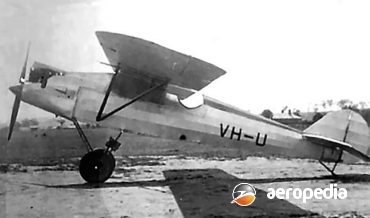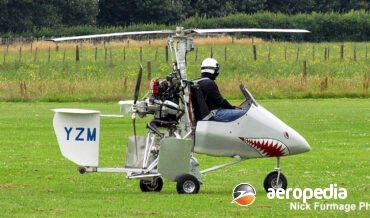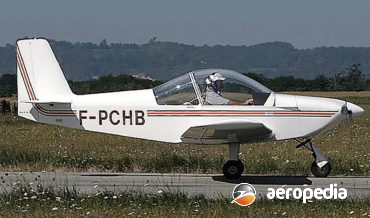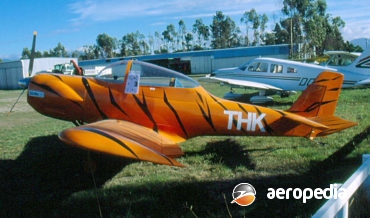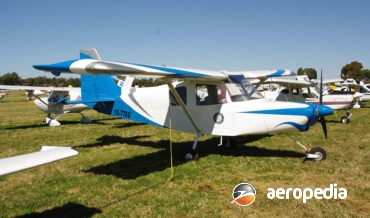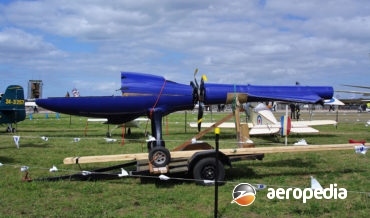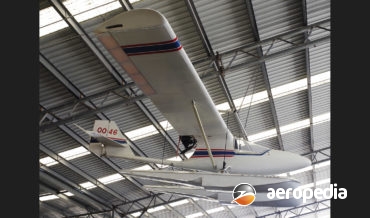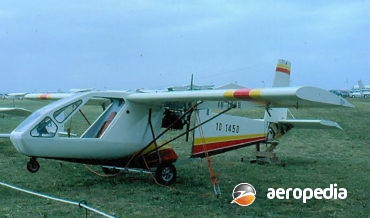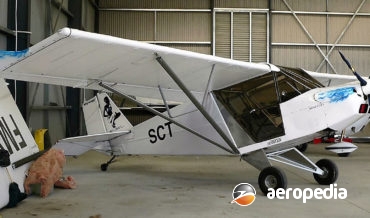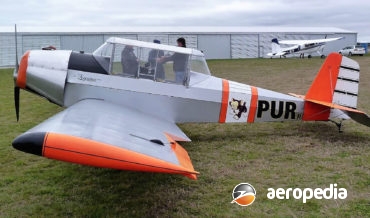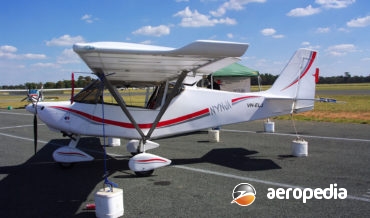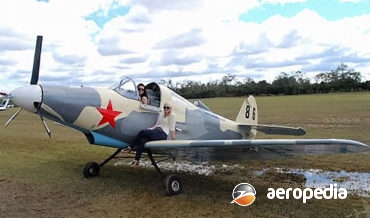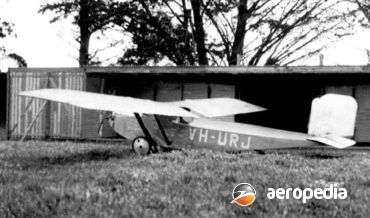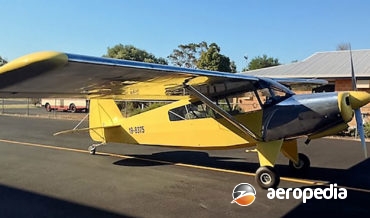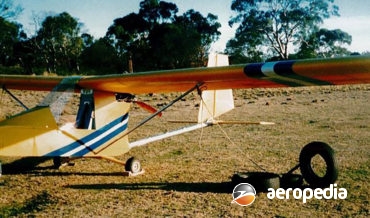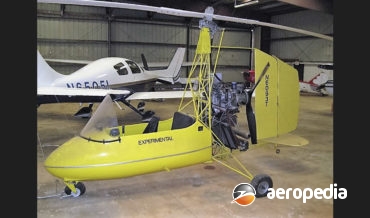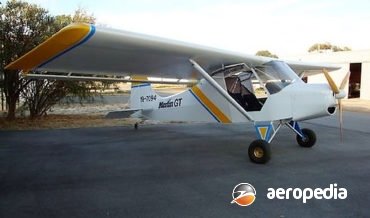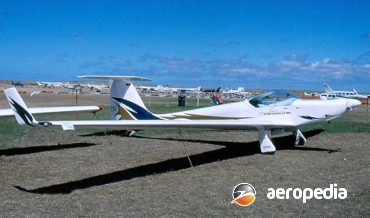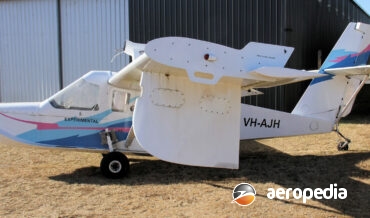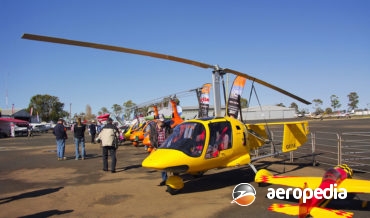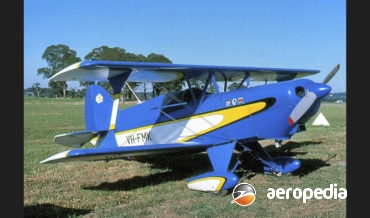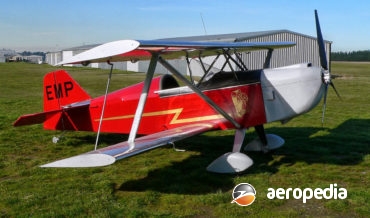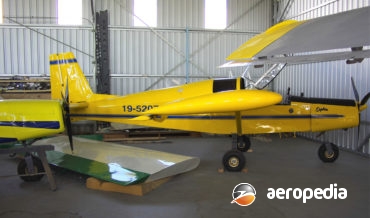All Contents
Contents
The ABA was designed and built by Mr Cecil Arthur Butler [1902 - 1980 - born in Sparkhill in Warwickshire in the United Kingdom] in 1930 as a shoulder-wing monoplane for the sporting aviator.
David C. Eyre
- May 8, 2019
The Butterfly series of gyrocopters marketed in kit form in the United States in a number of models, including the Emperor Butterfly, Monarch Butterfly, Golden Butterfly, Aurora Butterfly, Turbo Golden Butterfly, Ultralight Butterfly etc.
David C. Eyre
- May 8, 2019
The Cherry BX-2 is a light two-seat, side-by-side, sporting amateur-built aircraft designed by Max Brandli of BX Aviation in Switzerland.
David C. Eyre
- May 8, 2019
The Tiger Hawk is a small ultra-light homebuilt sporting aircraft designed and built by Mr Tim P D Bygate of Nelson, NZ. The first example was completed in 2002 and registered as ZK-THK (c/n 1) painted in an attractive Tiger colour scheme, making its first flight on 7 September 2001
David C. Eyre
- May 8, 2019
In 2009 Brumby aircraft of Cowra, NSW announced it was to build and market a high wing model of his successful Brumby low wing monoplane, the latter becoming known as the Model 600 and the new model became known as the Brumby High wing 610 LSA, the partially completed prototype
David C. Eyre
- May 8, 2019
The JBX-1 is a new Australian designed ultra-light single-seat high-performance sporting aircraft designed, built and manufactured by Best Brand Aussie Aero of Camberwell, VIC, a company which produces the modular design aircraft which is described as like a 35-mm camera with interchangeable lenses, “instead of changing lenses, you can change
David C. Eyre
- May 8, 2019
Raymond Broome was interested in designing his own ultralight aircraft and in the late 1980s commenced to build an aircraft, this being along the lines of the Bedson Resurgam series.
David C. Eyre
- May 8, 2019
The Boredom Fighter was designed by Donald Wolf as a single-seat ultra-light aircraft to look like a classic aircraft of the 1920s and is marketed by Sirius Aviation in the United States.
David C. Eyre
- May 8, 2019
The Fly Baby was designed by the well known American historian and homebuilt designer, Mr Peter Bowers, to compete in a design competition held by the United States Experimental Aircraft Association and was aimed at being a simple low-cost, easy to fly, amateur built aircraft to be built by inexperienced
David C. Eyre
- May 8, 2019
The JB-2 was designed by Melbourne designer, Rolf Brand, as a light sporting aircraft aimed at the homebuilder and sports aviation enthusiast.
David C. Eyre
- May 8, 2019
The Skyranger Swift is a development of the Skyranger and optimised to take advantage of engines ranging from 60-kw (80-hp) to 75 kw (100-hp) and was basically a Skyranger with a new smaller sports wing, the company providing an aircraft which benefited from higher cruising speeds and more comfortable flight
David C. Eyre
- May 8, 2019
Designed by Vladimir Talanczuk, a Ukrainian-born aeronautical engineer, the Chinook over the years has been produced in a number of models, either single-seat or two-seat and it is a high-wing ultra-light aircraft, the prototype of which was flown for the first time on 12 December 1982 at Wizard Lake, Alberta
David C. Eyre
- May 8, 2019
The TL-1 was designed and marketed by Birdman Aircraft Inc with the idea of selling a sturdy, lightweight aircraft that was inexpensive to build and operate, and which could be assembled with ease by a novice builder.
David C. Eyre
- May 8, 2019
Described as “the Ferrari of the air” the Blackshape Prime BK100 is a sleek high-tech two-seat in tandem light sporting aircraft built from carbon fibre.
David C. Eyre
- May 8, 2019
The Blanch Biplane, also known as the Blanch Experimental, was designed and constructed by Mr A S E Blanch in the 1920s near Armadale, WA.
David C. Eyre
- May 8, 2019
Following the completion of Moa, Alan Belworth and his family have continued to build light aircraft as in June 2000 a further aircraft was completed, this being the Belworthy Figaro (ZK-PUR – c/n Bel 7), an all-wood fabric covered aircraft, the rudder and elevators being of steel tube construction.
David C. Eyre
- May 8, 2019
The Nynja was designed by Phillipe Prevot and is a logical development of the company’s previous designs, the Skyranger and the Swift.
David C. Eyre
- May 8, 2019
In the late 1930s Bell Aircraft Corp was looking at producing a shipboard variant of the Bell P-39 Aircobra, the design, known as the XFL-1 Airbonita, being powered by an Allison XV-1710-6 twelve-cylinder VEE engine installed behind cockpit driving a three-blade Curtiss propeller via a shaft through the cockpit.
David C. Eyre
- May 8, 2019
The Wee Bee was designed in 1924 for the Lympne light aircraft trials by W S Shackleton for William Beardmore & Co Ltd of Dalmuri, Dumbarton Shire, in Scotland.
David C. Eyre
- May 8, 2019
The Bearhawk Patrol and Bearhawk LSA are developments of the R & B Bearhawk utility aircraft developed in the United States.
David C. Eyre
- May 8, 2019
The Bearhawk Patrol is a development of the R & B Bearhawk light utility aircraft which was initially produced in plan form for the amateur aircraft market and is now one of three aircraft in the series which was initially designed by Robert Barrow.
David C. Eyre
- May 8, 2019
The Bede BD-5 was one of a number of designs produced during the 1960s by Bede Aircraft of Newton, Kansas to meet the requirements of the home constructor.
David C. Eyre
- May 8, 2019
By late 1971 Bede Aircraft claimed it had 4,300 orders for the BD-5 series but found changes had to be made to the design as flight testing revealed the V-tail was unstable.
David C. Eyre
- May 8, 2019
The BD-5 series was the subject over the years of much development due to the difficult constructors were having in locating a suitable engine.
David C. Eyre
- May 8, 2019
Gordon Bedson was born on 23 September 1918 in the Channel Islands and commenced employment with the Miles Aircraft Company in 1936.
David C. Eyre
- May 8, 2019
The Honey Bee was a single-seat all-metal light aircraft designed by William Chana and Kenneth Coward, engineers with Convair in San Diego, in the 1970s. The first example was flown for the first time on 12 July 1952.
David C. Eyre
- May 8, 2019
The Barnett Rotorcraft Co of Olivehurst, California for some years has designed and built two generally-similar ultra-light gyroplanes known as the J-3M and J-4B and the basic difference between the two has been the engine installed, the J-3M being a utility model with a flat-side cabin with fabric covering and
David C. Eyre
- May 8, 2019
The Merlin, which was originally designed in Canada in 1990 by John Burch, was developed by Aerocomp Inc of Merritt Island, Florida and in recent years has been available from Blue Yonder Aviation.
David C. Eyre
- May 8, 2019
The Ximango series has been produced by Aeromot Industries Mecamco Metalurgca LTDA in Brazil, which for a time produced the French Fournier RF-10, production rights for which had been obtained in 1985.
David C. Eyre
- May 8, 2019
The Aeroprakt series of light sport aircraft is produced in the Ukraine and has been very popular in this part of the world, with more than 140 examples in operation throughout Australia and New Zealand, most aircraft being registered in Australian under sport aircraft rules with the RAA. The A32
David C. Eyre
- May 8, 2019
The Adventurer 333 was designed and marketed as a light amphibious monoplane with a flying-boat hull and available in kit form, a number of examples being sold around the world before the manufacturer ceased production.
David C. Eyre
- May 8, 2019
The Sea Hawk was designed by Garry LeGare in Canada, it being an all-composite amphibious biplane which, depending on the power plant installed, can seat two adults, up to three adults, or two adults and two children.
David C. Eyre
- May 8, 2019
The Xenon was developed in France in 2005 and is a factory built and delivered fully-assembled gyrocopter produced by ABS Aerolight in France with a variety of Rotax aircraft engines.
David C. Eyre
- May 8, 2019
The Stingray was a mid-wing fully cantilevered light sporting aircraft with a pylon mounted pusher engine designed by Mr Raymond Tolhurst and built in some numbers at the Camden facility of Composite Engineering in the 1980s.
David C. Eyre
- May 8, 2019
The Acro Sport was designed by the late Mr Paul Poberezny, President of the Experimental Aircraft Association of America, specifically for construction by persons with no experience in building aircraft.
David C. Eyre
- May 8, 2019
In 1985 the Aircraft Spruce and Specialty Company sponsored the design and construction of a light aircraft, the goal being to develop a new homebuilt aircraft that could be easily constructed from plans and / or building instructions and using commonly available materials.
David C. Eyre
- May 8, 2019
Over the years the Buccaneer has been produced by a number of companies and in a variety of models, one name being given to it at one stage being the Mallard. It is a single or two-seat light amphibian with an engine in the pusher configuration and has been marketed
David C. Eyre
- May 8, 2019
The Seastar was designed and built by AAC Amphibian Airplanes of Squamish, British Colombia, as a light two-seat amphibious biplane for sporting use.
David C. Eyre
- May 8, 2019
The Hornet was designed by Ole Hartman of Australian Aircraft Kits as a large roomy short-take-off and landing light sporting aircraft suitable for manufacture by the amateur builder. With a large luggage space, and good cross-country performance, it became available in 2004 in kit form and is manufactured in the
David C. Eyre
- May 8, 2019
The Wasp GT was designed by Ole Hartmann and introduced to the Australian Aircraft Kits range of amateur-built light aircraft early in the 21st century, the kits being available to purchasers from the company’s facility at Laurieton, NSW.
David C. Eyre
- May 8, 2019
Recent Comments
Archives
Categories
- No categories
Categories
- No categories
Latest Posts
Newsletter

